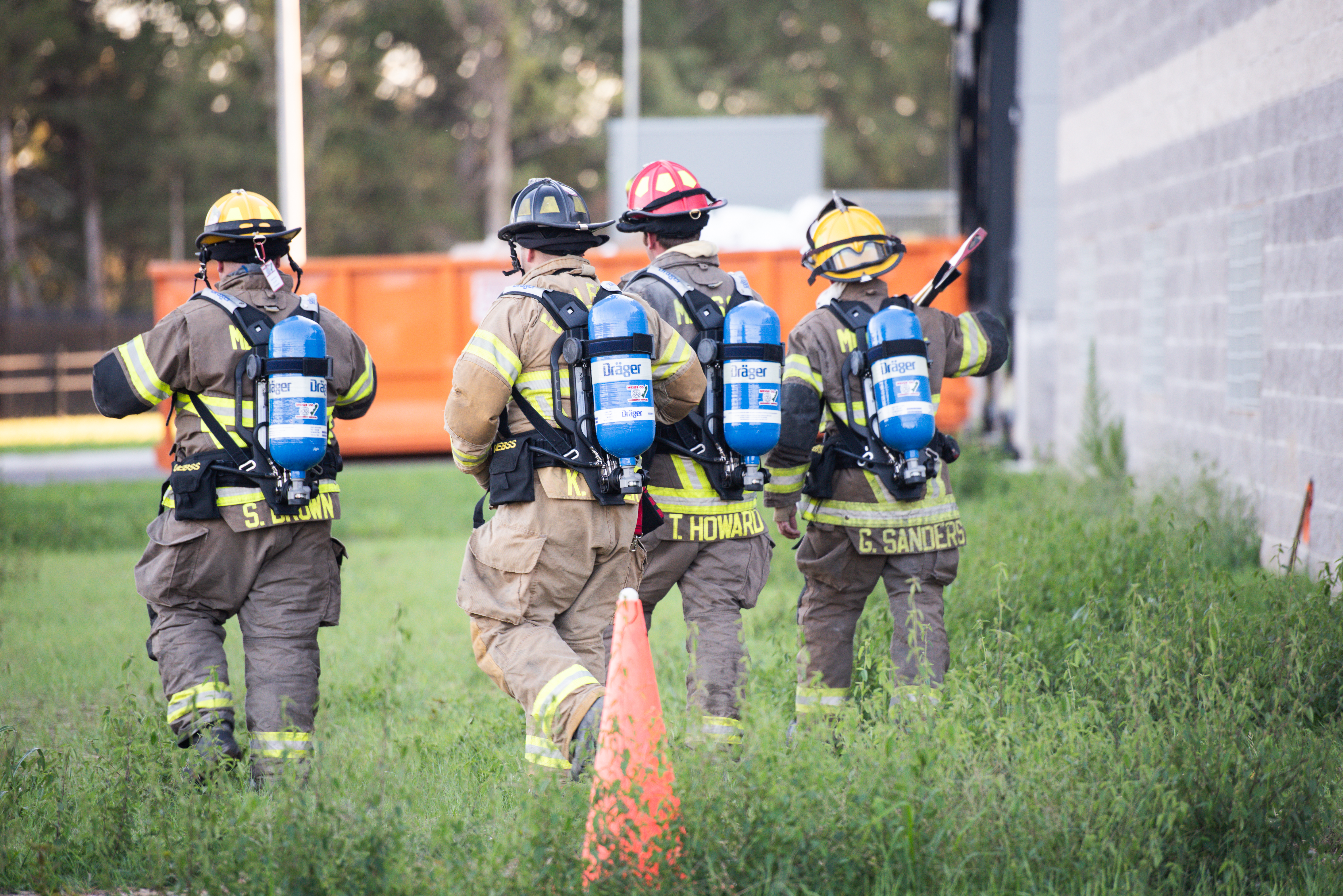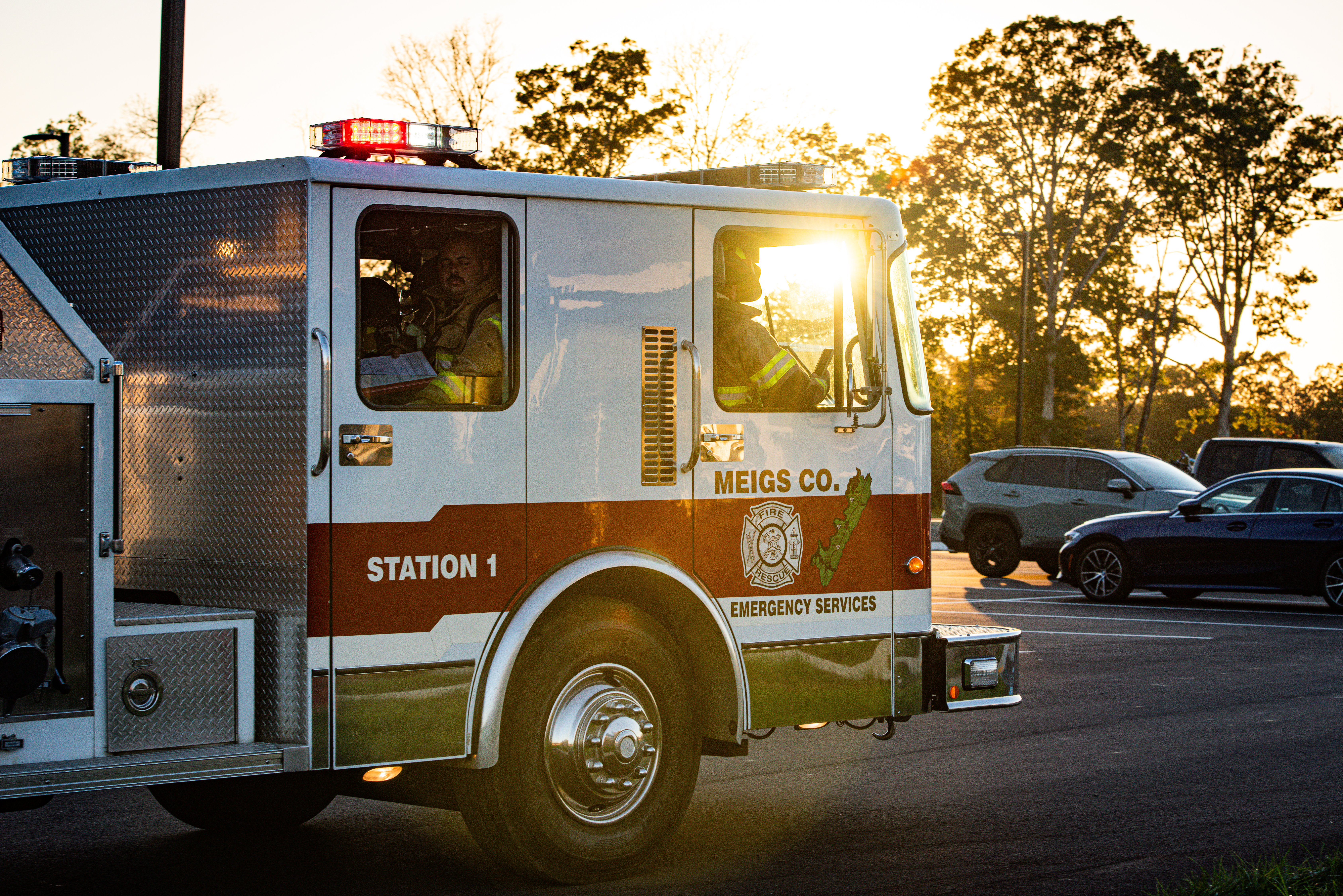At TVA preparedness and Safety is paramount, coordinated agency emergency exercises serve as vital tools. Recently, a series of comprehensive exercises were conducted at the new Systems Operation Center located in Georgetown, Tennessee.
This new facility brought together additional agencies, including Bradley County Fire, Meigs County Volunteer Fire and Emergency Services and TVA Contract Security, to simulate various emergency scenarios and evaluate response protocols. These exercises were made possible thanks to Facilities Management and Transmission Emergency Preparedness who spent countless hours helping to establish coordination, connections and understanding with the outside agencies.
The exercises aimed to familiarize personnel with the layout of the facility while testing communication and coordination between agencies. With the new SOC slated to go into operations soon, the need for a thorough examination of potential emergency situations, including natural disasters, medical emergencies, and security threats was vital.
“Emergency situations are something we take very seriously, so we need to be prepared as possible to protect our employees and the security and reliability of the energy grid,” Tami Fowler, Sr. Program Manager, Emergency Preparedness and Response said. “Their perspective really helped us identify some areas that we hadn’t realized were paramount to a quick and effective emergency response.”
Planning and Coordination

The planning process began months in advance, involving numerous meetings and strategy sessions among the participating agencies. The exercise’s complexity reflected real-world conditions, ensuring that responders would be prepared for any eventuality.
“Without proper cooperation or collaboration, we wouldn’t have knowledge of the facilities. We know this is a high priority infrastructure, and it’s our job to help protect it,” Tony Finnell, Emergency Services Director of Meigs County said. “For TVA to put their faith and trust in us means a lot. “A lot of folks don’t realize the responsibility we have and also the impact TVA has—TVA knows to look outside the gate to their communities.”
A critical component of the planning was the identification of and establishment of an Incident Command and Incident Command Post (ICP) within the facility perimeter. This ICP served as the central hub for coordination, allowing on-scene first responders to communicate effectively and share real-time information during the exercise.
“Having the outside agencies there really helped us gain a better understanding of what type of location would serve best as the ICP, and what type of resources they would need once on site,” Ken Short, Program Manager of Facilities Support said. “Having that knowledge, will help us save time in the eventuality of an actual emergency.”
Debriefing and Evaluation
 As the scenarios unfolded, responders faced various challenges, from putting out fires to evacuating staff and visitors. Exercise controllers and evaluators documented each phase of the exercise, focusing on response times, teamwork and protocols.
As the scenarios unfolded, responders faced various challenges, from putting out fires to evacuating staff and visitors. Exercise controllers and evaluators documented each phase of the exercise, focusing on response times, teamwork and protocols.
Following the exercise, a hot wash was held to evaluate processes and procedures. Each agency shared observations, discussing what worked well and identifying areas for improvement. Feedback from the exercise was invaluable, helping to refine protocols and enhance inter-agency communication.
“The hot wash is the most important part of the exercise,” Tami said. “This is where we are able to identify areas that need improvement so we can make changes today to be more prepared for real-life situations.”
As the new SOC gets ready for parallel operations with the existing SOC, the need for continued collaboration continues to exist.
“We will continue to train and exercise and evaluate to make sure we are as prepared for an emergency as we can be,” Ken said.
